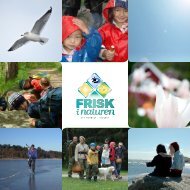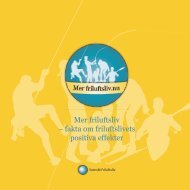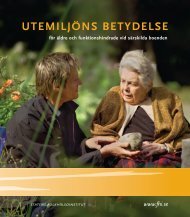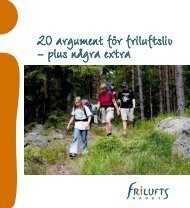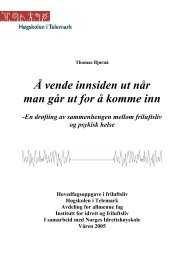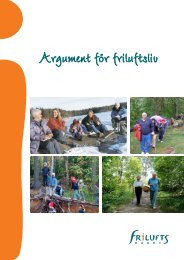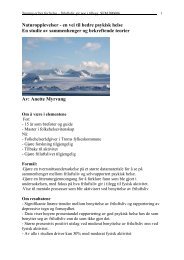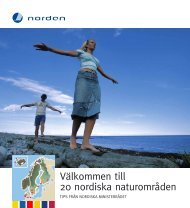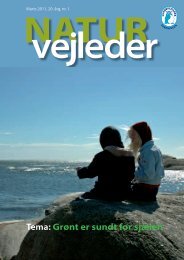Green Care: A Conceptual Framework - Frisk i naturen
Green Care: A Conceptual Framework - Frisk i naturen
Green Care: A Conceptual Framework - Frisk i naturen
Create successful ePaper yourself
Turn your PDF publications into a flip-book with our unique Google optimized e-Paper software.
can be derived not only from human relationships, but also from a<br />
human-animal relationship. According to McNicholas and Collis (2001)<br />
social support from animals (pets) may be a replacement for lacking<br />
human support, providing a release from relation obligations, enhance<br />
reorganization, re-establish routines, and “top up” existing human support.<br />
Although animals encountered in various green care settings are not<br />
necessarily ‘companion’ animals (in care farming, for example, they are<br />
more likely to be livestock) for the participant or client, in addition to the<br />
contact with other clients, the farmer and his/her family, the animals are<br />
thought to serve as catalysts or mediators of enhanced conversation skills.<br />
Bernstein et al (2000) demonstrated that geriatric persons subjected to<br />
Animal-Assisted Therapy were more likely to initiate and participate in<br />
longer conversations than a control group getting Non-Animal Therapy<br />
(NAT) like arts, crafts and snack bingo. Similar effects were found in<br />
a 12-month controlled study of elderly schizophrenic patients where<br />
contact with a pet, either a dog or a cat, resulted in significantly improved<br />
conversational and social skills in the experimental group compared with<br />
the controls (Barak et al, 2001).<br />
The inherent nature of the majority of green care approaches is to be<br />
inclusive, to re-engage disengaged groups of people with themselves and<br />
with other people through nature based activities (be those plant or animal<br />
focused). The concept of social inclusion is therefore an important one<br />
within green care.<br />
7.3 Multifunctionality in agriculture<br />
<strong>Care</strong> farming or green care within agriculture provides an example of<br />
multifunctionality in agriculture. Recently, there has been a substantial<br />
shift towards recognising that any area of land can provide many different<br />
services at the same time (including environmental, recreational and health<br />
services) and so therefore can be thought of as multifunctional (Hine et al,<br />
2008a; Hine, 2008).<br />
The agricultural sector has become particularly aware of the multifunctional<br />
character of land and although the core aim for agriculture remains the<br />
production of food, fibre, oil and other primary products, it also provides<br />
other important benefits to society and the environment. These include<br />
106 <strong>Green</strong> <strong>Care</strong>: A <strong>Conceptual</strong> <strong>Framework</strong>



